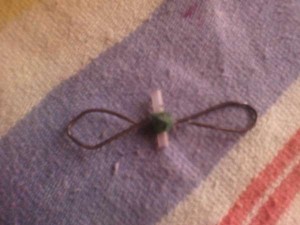Here’s a DIY propeller from Dinkar in India.
Here are the last night pictures of making a propeller. The raw materials that I have used are-two wooden spoons 5cm
each), empty ball-pen refill, metal wire, thread, fevicol & fevikwick etc. This time one of my friends Vasant who is also primary teacher, working in same district where am I, came and joined me. He is on holidays now living at Nanded i.e. nearly 100 km away from my town. But specially he visit me to take squirrel kit for his students. He will send me some pictures of his activities. Take care. –Dinkar


















